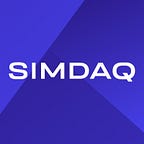How to Choose an Exchange in the Crypto Asset Market. Part 3 — Goals and Tools
In a new article about working in the crypto asset market, we talk about important factors when choosing exchanges — your goals, comfort and preferred tools.
You may read previous articles of the series here:
How to Choose an Exchange in the Crypto Asset Market. Part 2 — Jurisdiction
Practical lessons in a gaming form and training on historical data for beginners and professional traders soon will be available on SIMDAQ, our platform for democratization of the digital asset trading, watch the news. If something in this article remains unclear, you may come in our community in Telegram, Twitter or Facebook and ask any question there.
Assets row
Exchanges pursue different policies of adding new digital assets for trade. Some of them are focused on trading the most popular cryptocurrencies, like Bitcoin and Ethereum; others moderately expand the list of available currency pairs making a choice in favor of assets already reached certain turnover. There are some sites that represent the ability to work with more than 100 types of digital assets by quickly adding tokens of new blockchain projects. Based on your strategy of working in the market, you should consider this factor when choosing an exchange.
Currency pairs with so-called fiat currencies like USD or EUR are available not on all exchanges. That is, in many cases, a trader will be able to bring on an exchange only a currency, which he/she previously acquired in an exchanger or received in other way. He will similarly need to provide for an additional exchange operation into fiat money after withdrawal of funds from the exchange, which means additional costs and risks.
Comfort and conditions
If it is possible to bring fiat money to an exchange, replenishment is possible by means of bank cards, accounts or electronic money systems. Almost all main sites already have SWIFT/SEPA support. Each exchange has its own rules and requirements for the disclosure of a customer’s information with different methods and amounts of replenishment and withdrawal of funds. The majority of them have limits on the amount of funds that can be withdrawn from the site within 24 hours. You should study these rules in advance, as well as get to know with users’ messages on forums concerning ways and possible difficulties in withdrawing funds from the site.
As a general rule, exchanges take commissions from each transaction concluded, and their amount is on average 0.1% to 0.3%. Additional options that may be of interest to novice traders include built-in technical analysis of quotation charts, the possibility of margin trading and obtaining passive income by providing loans to other participants.
Convenience of the interface and the presence of your language version are two more factors in making the decision. Beginning traders can use trading simulators on historical data and other training applications to easier orientate in the exchange application and to make their trades more effective from the first steps. Such developments have already been existed for the cryptocurrency market. A feature of SIMDAQ will be the ability to train in the simulated trading mode at any speed, scrolling the historical data at a convenient pace.
The criteria for choosing an exchange in terms of convenience and compliance with your strategy are as follows:
- number of trading pairs;
- accessibility for new participants and users from other countries;
- ways to replenish the balance and withdrawal rules;
- verification methods and requirements for user authentication;
- amount of a commission;
- interface and available interface languages;
- possibility of margin trading;
- quality and immediacy of the technical support.
